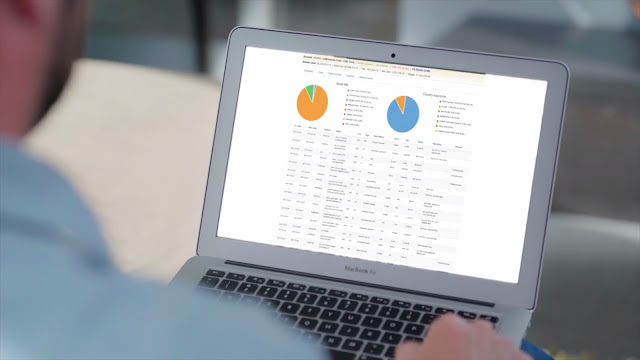REPOST: The Economy of 2016 Weighs on Elections in 2018 and 2020
Recovery after the last major financial crisis has been very
diverse and uneven across all states and across different industries. All of
which, however, may have been partly (or largely) affected by the United
States' political environment. Bloomberg
has an interesting article on this matter:
 |
The beginning of an explanation.
Photographer: Mike Theiss/National Geographic/Getty Images |
One of the conundrums of the recovery from the financial
crisis is how varied it is and the diverse perceptions of it by different
people in different parts of the U.S.
All of this reminds me of John Godfrey Saxe’s wonderful
poem, “The Blind Men and the Elephant.” In it, six blind men each touch and
describe a different part of the animal. Their incomplete perspective makes it
impossible to grasp the whole.
The elephant analogy applies to a U.S. economy, where regional
components are very different from, and often bear little resemblance to, one
another. Attempts to draw broad conclusions from a single locale or region will
inevitably lead one astray.
Regular readers will recall that I have looked at these
various differences before, usually in my effort to describe why for so many
Americans it feels like the recession never ended. Much of the commentary has
been about politics driving sentiment about the economy.
But I’m curious about the opposite causal relationship: How
does your local economy affect national politics and state-level voting? It is
through this lens that I am trying to understand the red-blue divide that is
becoming so stark in America, turning the country into rival camps that neither
recognize nor understand one another.
Before we consider that, let’s review some prior
discussions: We have noted how strikingly uneven the recovery has been across
several different facets of the economy. Housing, for example, has recovered
strongly in some areas while it remains in the doldrums in others. Regional
differences are stark, with rural areas that once depended on manufacturing in
decline while those urban areas with information-services industries are
thriving. The same is true by economic strata, based on whether you are in the
top 1 percent or the top 0.1 percent. The top percentiles have garnered an
inordinate share of all income gains since the recession ended in 2009.
No doubt, the slow recovery from the credit crisis deserves
some blame. When we look at the numbers since 2009, we see a steady but gradual
improvement. Unemployment, which peaked at 10 percent, has been more than
halved, and now is well below 5 percent. In the eight years before the November
election, some 12 million new jobs were added. Employers are now complaining of
a shortage of workers in some industries. Job openings, especially for skilled
workers, can go unfilled for long periods of time. Wages, which stagnated or
fell in real terms for half a decade, only now are rising faster than
inflation.
Continue reading on this PAGE.
"The opinions expressed in this re-posted article are not necessarily the views of LOM, but are presented to provide a broad spectrum on financial matters."
"The opinions expressed in this re-posted article are not necessarily the views of LOM, but are presented to provide a broad spectrum on financial matters."



Comments
Post a Comment